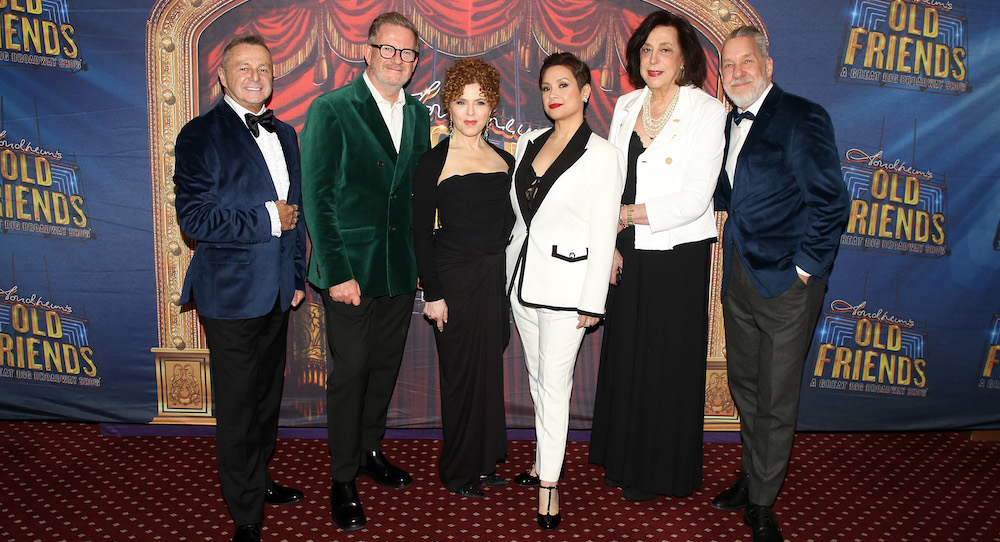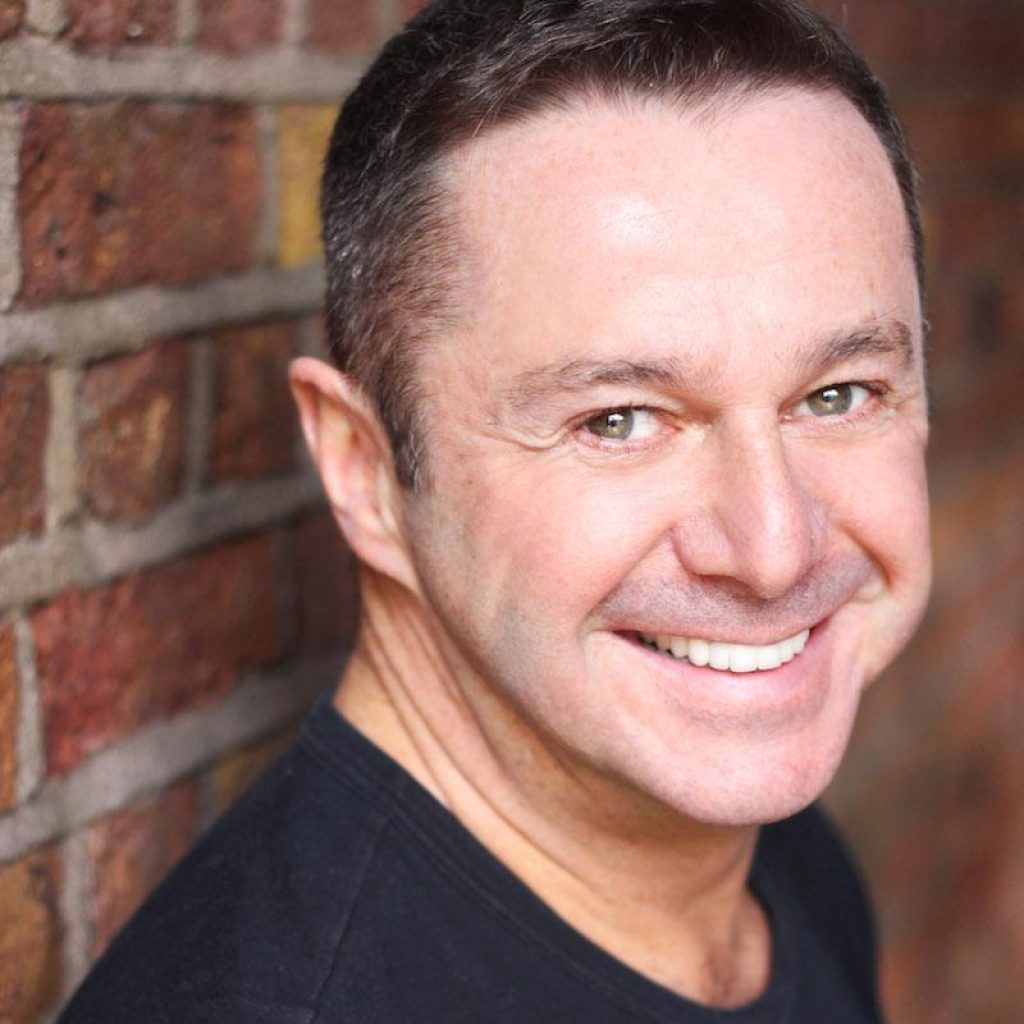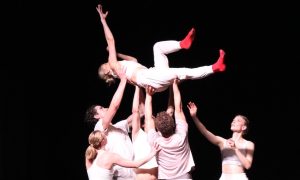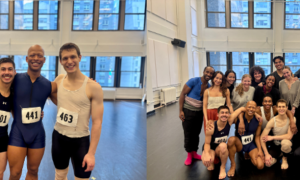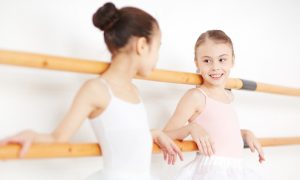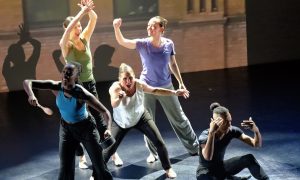Three-time Olivier Award-winning choreographer Stephen Mear has just about done it all: from Kiss Me, Kate to Mary Poppins to Sweet Charity to Guys and Dolls. The Brighton-based dancemaker’s latest project has been the Sondheim revue program Stephen Sondheim’s Old Friends at New York City’s Samuel J. Friedman Theatre, through the Manhattan Theatre Club.
Here, Dance Informa speaks with Mear about the process, cast, collaborative nature of the project and more. Through that, he also offers a good deal of wisdom applicable to dancemaking more generally – with a side of notably personable warmth and pure excitement about what he does. Let’s jump right in to hear what he has to share!
Choreographing Sondheim
This isn’t Mear’s first rodeo with Sondheim – far from it. He actually got to work with the man himself not once, but twice: once as a performer, and another as a choreographer. In both roles, he learned a lot from watching amazing performers in the ensemble at hand, he shares.
Key to staging Sondheim, Mear notes, is not “treading on the brilliant lyrics…they say and speak so much.” He believes that acting, and the theatricality within dance sections, is incredibly important.
Mear also highlights the humor in the material. “It’s not necessarily ‘laugh out loud’ funny, but there’s definitely a snigger or smile because you get the joke.” When it comes to movement, these are “great shows” for that. Yet – for most (perhaps with exceptions like Gypsy) – the movement is more about that theatricality and humor, as well as building character, than about virtuosity or spectacle.
What can be very special about such an approach, Mear thinks, is that “Joe Public” in the audience thinks, “I can move like that!” – so it becomes more welcoming and relatable.
The process: Highlighting what’s honest and accessible
That’s not to say that these shows don’t have “big”, vaudevillian numbers; Mear named “Bargie’s Blues” and “Maid” as two in this program that are just that. With numbers like these, he says, “it takes having a very collaborative team to have all of the elements come together cohesively.” He believes that cohesive, fluid quality resonates through Stephen Sondheim’s Old Friends. “The movement, music and all other elements have really worked together.”
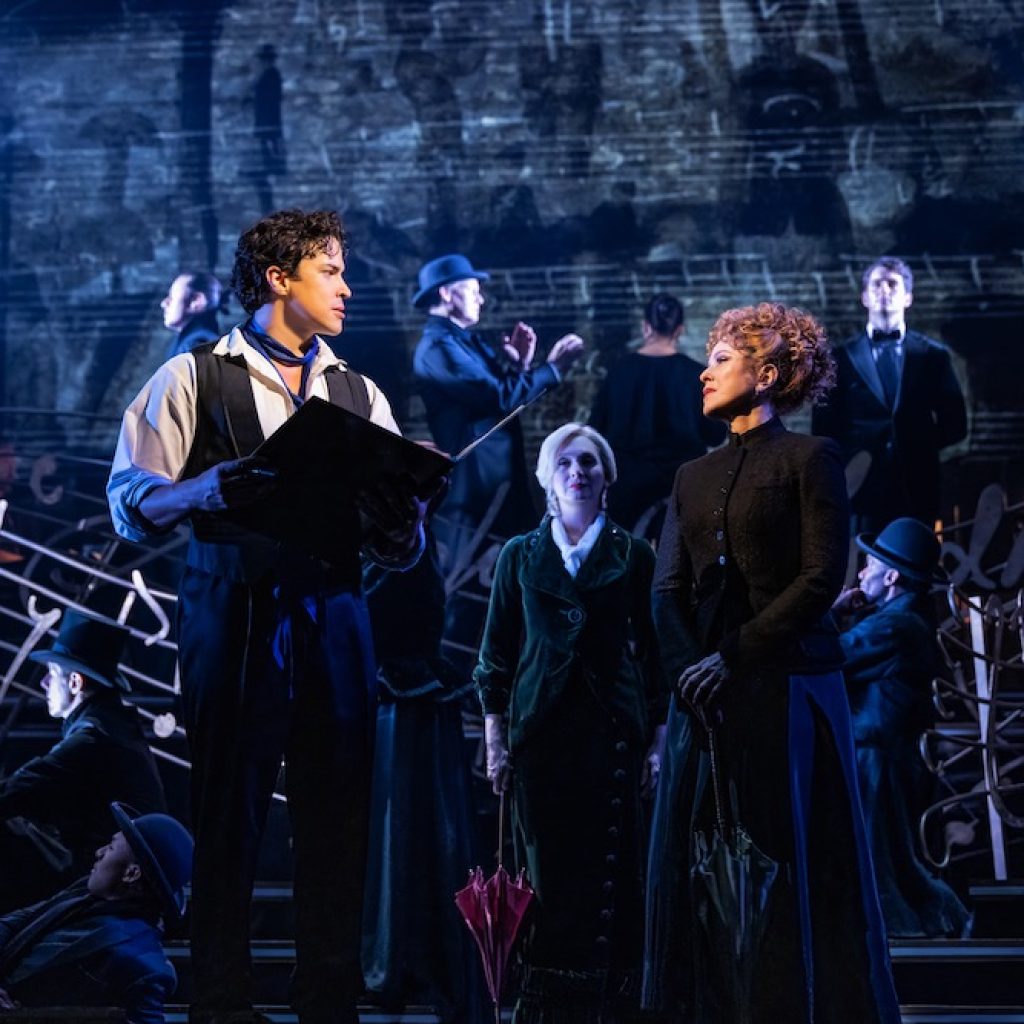
A collaborative team has also allowed for full support of performers, Mear affirms – which, with performers having a variety of skillsets, is sometimes crucial. “‘Maid’ was an interesting challenge because the performers aren’t necessarily movers, but they’re very witty and funny,” Mear recounts. The task – as is often crucial in musical theater, and choreographing more generally – has been to capitalize on what the talent brings to the table.
With another number, “Broadway Baby”, the dynamic became about the characters “one-upping each other” and “molding that to be more tongue-in-cheek,” he adds. “You have to stage that with wit and characterization.”
Structure has also been important, Mear explains. Numbers being woven together in a particular way has allowed all of the characters “chances to shine.” That, in turn, has enhanced the closeness that audience members can feel with them.
The intimate venue space already set fertile ground for that. “Audience members have really been able to connect – they even sometimes get raucous!” Mear says with a laugh.
The ensemble: Bursting with starpower
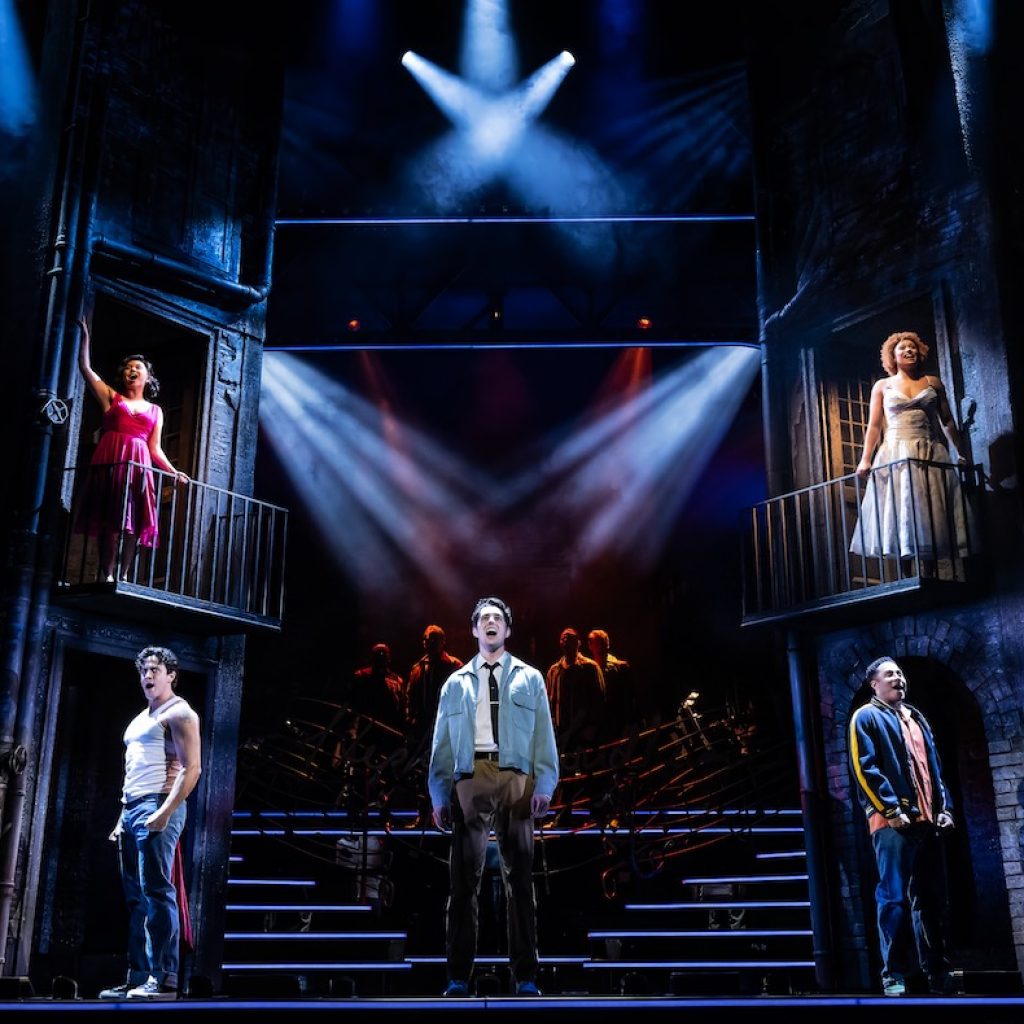
As for those on the other side of the fourth wall, the ensemble, Mear said that the Stephen Sondheim’s Old Friends cast is chalk-full of “fabulous West End and Broadway stars.” Arguably even better, and more admirable, than their star caliber: “they’re so generous with each other,” Mear notes – always giving all to the process and helping each other bring their best. “They really cover each other,” he says, complementing each other’s strengths and growth areas.
Mear has also noticed their “discipline,” he shares. “For example, even in tech rehearsal – when they don’t necessarily have to go full-out – they still do. It makes such a difference when you work with talented people who are also good people. I can’t sing their praises enough.”
He describes a few particularly special moments, when all of that – the talent, the commitment, the generosity – has borne fruit. “Bernadette [Peters] with ‘Losing My Mind’ is just wonderful,” as well as “A Little Night Music” and “Send in the Clowns.”
Mear is clear that all ensemble members have brought something special to the work – including the child performers, who, he says, are notably mature as performers and as professionals. “They’re all real triple threats!”
On the plate and on the horizon: Beyond Sondheim
As a director and choreographer, Mear is busy and in-demand. So what’s next on the horizon for him? In a great stroke of luck, he’ll be directing a film where he’s already located, in Brighton, UK.
He also serves as a college patron – which he believes is important to make time for, and he loves interacting with “young talent.” That leads him to sentiments with which he wants to close us out, something he’ll often reinforce for emerging choreographers: the importance of making dance not for just “dance’s sake….storytelling is so important.”
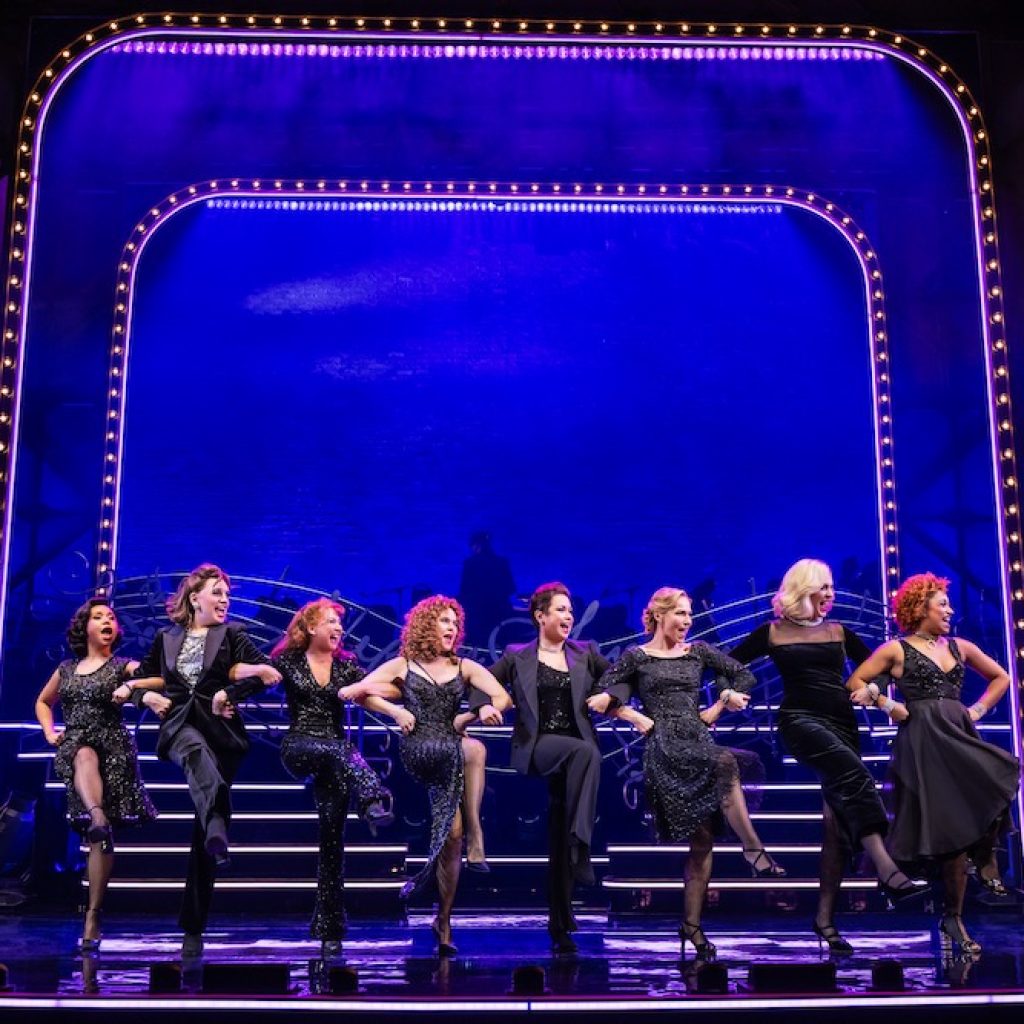
In the same line of thinking, he underscores the importance of keeping things simple; less can truly be more. “My biggest mistake when I was learning [to choreograph] was being ‘too busy’ with movement,” he recounts. He received wise words of guidance that still stick with him: “Just because you have a parasol doesn’t mean that you have to twirl it.”
The flourishes, the spectacle, the virtuosity: as Stephen Sondheim’s Old Friends has demonstrated, what often matters more is nuance, strong characterization and bringing what’s strongest center-stage. Keeping things cohesive and pleasant through effective collaboration, not to mention simply being a good person to work with, can matter just as much.
Stephen Sondheim’s Old Friends has recently been extended until June 29. Learn more and purchase tickets here!
By Kathryn Boland of Dance Informa.


